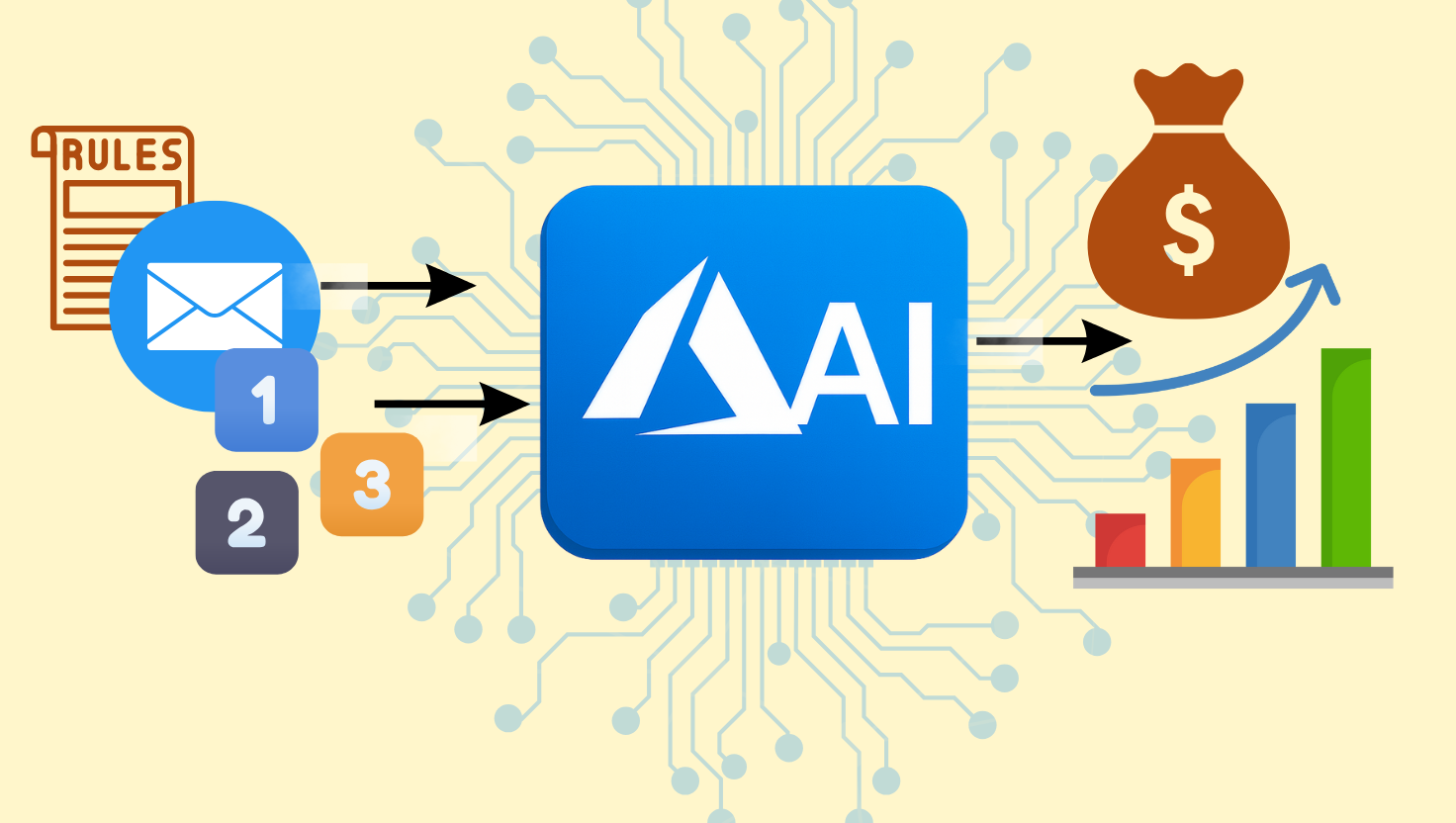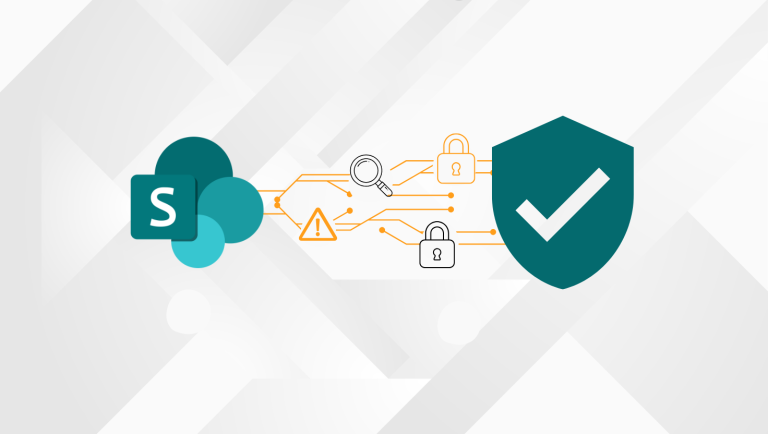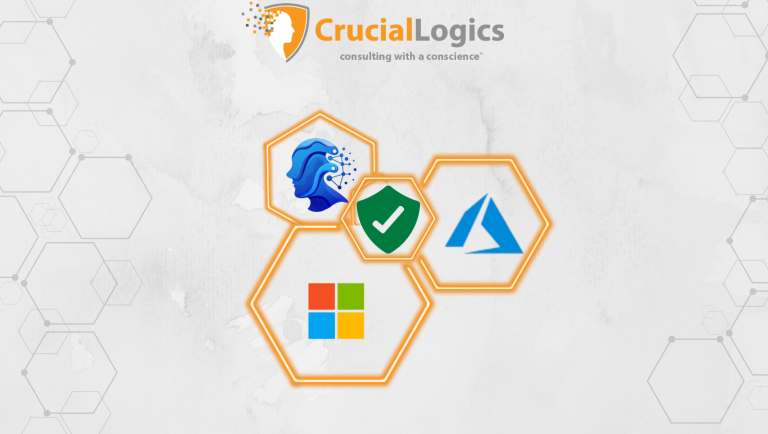For today’s organizations, the question is no longer if AI should be used, but how to implement it effectively and responsibly. The challenge lies in finding AI solutions that seamlessly integrate into current infrastructure, comply with regulatory standards, and drive measurable business value. Microsoft Azure AI excels in meeting these needs, offering secure, scalable tools designed to enhance what already works.
In this blog, we’ll explore the components of Azure AI, its role in everyday business processes, and how to deploy it for immediate and strategic impact.
The Importance of Azure AI in Business Processes
Azure AI is a comprehensive Microsoft platform designed to support the creation and deployment of intelligent applications at scale. It unifies key technologies—including machine learning, computer vision, speech recognition, and natural language processing—under a secure, enterprise-grade framework.
By enabling faster innovation, secure operations, and scalable solutions, Azure AI empowers organizations to transform business processes intelligently. Key services within the platform include:
- Azure OpenAI Service – Delivers access to powerful generative AI models, enabling advanced content generation, code automation, and conversational interfaces.
- Azure Cognitive Services – Offers pre-built APIs for vision, speech, language, and decision-making, enabling developers to quickly integrate intelligence into their applications.
- Azure Machine Learning (Azure ML) – Provides a complete environment for building, training, and deploying machine learning models at scale.
- Azure AI Studio and Microsoft Copilot Studio – Tools for designing, testing, and deploying AI-powered copilots and applications with minimal coding effort.
Azure OpenAI Service
Azure OpenAI gives your team secure access to advanced models like GPT-4, DALL·E, and Whisper—all within Microsoft’s enterprise-grade cloud. These tools aren’t just experimental; businesses use them daily to summarize documents, generate high-quality content, review code, and create responsive chat interfaces.
Built-in safeguards, such as role-based access controls, usage throttling, and content moderation, ensure that you can innovate quickly without compromising oversight or security.
Azure Cognitive Services
Azure Cognitive Services delivers ready-to-use AI capabilities that easily integrate into your applications. With a few API calls, you can enable speech-to-text, real-time translation, facial recognition, or sentiment analysis without any model training.
Grouped into four key areas, these services streamline your path to production:
- Vision – Identify objects, extract text from images, and analyze facial attributes.
- Language – Translate languages, detect sentiment, and understand context.
- Speech – Convert speech to text, translate spoken language, and build voice apps.
- Decision – Use behavioral data to detect anomalies and personalize experiences.
Azure Machine Learning (Azure ML)
Azure ML provides a robust environment for building, training, and deploying machine learning models at scale. It supports the full ML lifecycle, from data preparation to live model monitoring, and includes built-in tools for MLOps, bias detection, and policy governance.
Whether you prefer drag-and-drop interfaces or code notebooks, Azure ML gives data teams complete control and visibility over the model-building process.
Azure AI Studio and Copilot Studio
These low-code platforms simplify the creation of custom AI-powered applications and copilots. Designed to integrate with Microsoft 365 and internal business data, they enable teams to design workflows and automate complex tasks quickly.
With Copilot Studio, users can summarize meetings, process documents, or analyze spreadsheets—all without deep coding experience. Business teams can build functional prototypes, while developers refine and scale solutions with enterprise-grade controls.
Azure AI Key Business Use Cases and Applications
Azure AI stands out when it’s applied to real business problems. Each department has its priorities, whether it is reducing expenses, speeding up decision-making, or enhancing the customer experience.
Human Resources and People Operations
HR teams are leveraging Azure tools to streamline hiring, onboarding, and employee support processes. Resume screening is faster and more accurate, helping recruiters focus on the best candidates without compromising on fit.
Once hired, new employees are guided through setup, training, and policy reviews with built-in assistants that reduce the need for manual follow-up. As people grow in their roles, personalized learning recommendations can help match training to their goals and skill sets.
Finance
Finance teams use Azure to move from reporting what happened to planning what’s next. Forecasting models help predict cash flow and budget changes with more accuracy. Anomaly detection identifies unusual transactions promptly, enabling the detection of errors or fraud before they escalate.
Routine tasks, such as reconciliation and reporting, can be automated, allowing analysts to focus more on strategy and decision-making.
Marketing
With Azure AI, marketers can gain a deeper understanding of their audiences and move more efficiently. Machine learning models analyze behavioral and engagement data to uncover patterns that improve targeting and segmentation. Sentiment analysis helps monitor brand health in real time, while generative AI tools assist in creating tailored email copy, ads, and product descriptions for different segments.
Customer Support
AI is redefining support operations—reducing wait times and improving consistency at scale. Multilingual chatbots and GPT-powered virtual agents handle common queries around the clock, while transcription and summarization tools help agents process tickets more efficiently. AI can also automatically triage issues, routing each case to the right support team without delay.
Operations and Supply Chain
Azure helps operations teams work smarter across logistics, manufacturing, and field service. By combining real-time sensor data with forecasting tools, teams can identify equipment issues early and schedule maintenance before they occur.
Inventory planning becomes more accurate, resulting in reduced stockouts, manual errors and overordering.
Best Practices for Azure AI Deployment
1) Clean your Data
A strong data foundation is the difference between valuable insights and unreliable noise. Before rolling out any AI tools, make sure your data is clean, consistent, and relevant. That means fixing errors, standardizing formats, and eliminating duplicates.
Additionally, break down data silos early and establish secure pipelines so IT teams can access what they need without unnecessary hurdles.
2) Align Stakeholders from the Start
AI success isn’t just technical—it’s organizational. Get early buy-in from both IT and business stakeholders. IT owns infrastructure, security, and deployment standards, while business teams bring the domain expertise needed to design practical and context-aware AI workflows.
3) Start Small and Scale with Proof
Start with a narrow use case where AI can deliver quick, visible value without disrupting core operations. Once proven, you can expand gradually and keep your projects manageable.
4) Use Azure’s Built-in Safeguards
AI systems can be powerful, but without the proper checks in place, they also introduce risk. Azure includes several features to help teams stay in control. For example, Role-Based Access Control (RBAC) limits who can interact with specific models or data, which is essential in cross-functional environments.
You also get audit logs that show how models are being used—something that becomes essential once adoption grows. And if you’re building anything customer-facing, Azure’s content moderation tools help reduce the chances of things going off the rails. For industries with compliance obligations, tools for spotting bias and explaining model decisions can also make review processes easier to manage.
The Evolving Azure AI Ecosystem
Azure AI is evolving fast, with new capabilities designed to keep pace with the modern business landscape.
Multimodal AI Experiences
AI tools are no longer limited to just text or speech. New models can handle text, voice, and images simultaneously. It is like a healthcare assistant that can read a patient’s chart, listen to a doctor’s question, and pull up a visual summary all in real time.
Bring Your Own Model (BYOM)
Azure AI isn’t limited to Microsoft-built models anymore. It now supports third-party options from providers such as Anthropic, Meta, and xAI, giving teams the freedom to use the model that best fits their task.
One model may handle regulatory text more effectively while another might excel at image recognition or reasoning through domain-specific data. BYOM lets you make those trade-offs intentionally, without having to rebuild your workflows.
Since everything runs within Microsoft’s cloud, you still get the security, compliance, and access controls that enterprises expect.
Industry-Specific Copilots
Microsoft is rolling out copilots tailored to specific industries, such as healthcare, legal, and manufacturing. They’re built with the language, workflows, and compliance standards that matter in each field.
That means better context, fewer errors, and features that align with how work gets done in regulated or high-stakes environments.
Azure AI Marketplace
The Azure AI Marketplace makes it easier to get started with AI. It offers pre-built models and solutions from trusted partners and the broader AI community, ready to deploy without starting from scratch.
Everything is vetted for quality, allowing teams to find tools that solve real problems and bypass the heavy lift of building custom solutions from scratch.
Autonomous AI Agents
Autonomous agents are pushing automation to the next level. Instead of waiting for commands, these systems can make their decisions and adapt to new data.
For example, an agent might identify low inventory, place a purchase order, update the ERP system, and notify the supplier without requiring human intervention. It’s a move from automating single tasks to running complete workflows end-to-end.
Conclusion
Azure provides a secure environment for testing AI without compromising control over your data, users, or outcomes. Whether you’re building a chatbot, piloting a predictive model, or exploring copilots, you can start small and scale gradually.
Before you begin, ensure that your data is clean and that your teams are aligned. To achieve this, utilize Azure’s built-in governance tools, including access controls, audit logs, and monitoring.
Not sure where to start? We can help assess your data, identify high-impact use cases, and design a solution that aligns with your goals, budget, and compliance requirements. Contact us today to get started.






